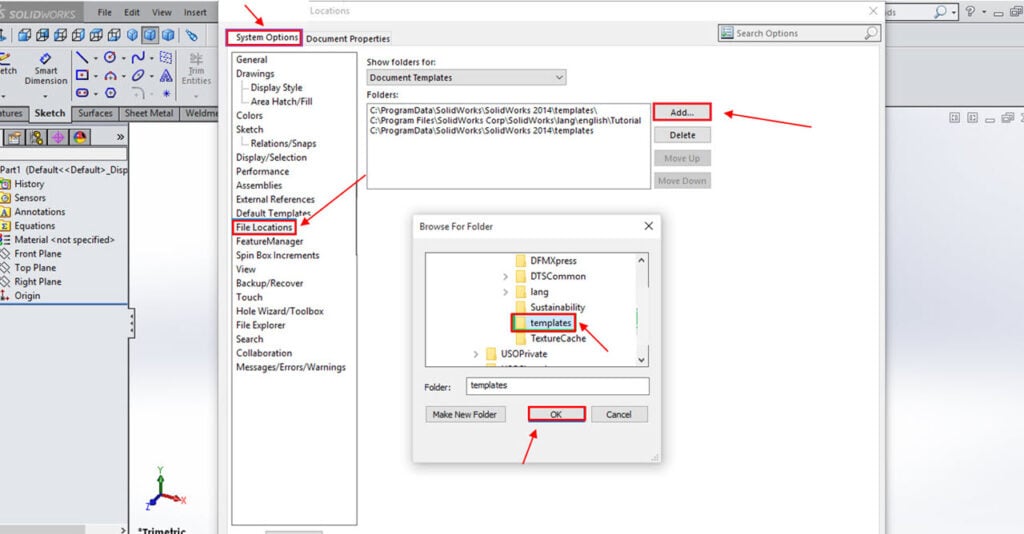
- #HOW TO CHANGE UNITS IN SOLIDWORKS 2017 HOW TO#
- #HOW TO CHANGE UNITS IN SOLIDWORKS 2017 PRO#
- #HOW TO CHANGE UNITS IN SOLIDWORKS 2017 ISO#
See the image below with the image quality slider set at dramatically different levels. The higher the image quality, the smoother the curves will look graphically-but that smoothness comes at the price of performance. You can think of this as ‘sport mode’ for your models but in fact, it is the tessellation or curvature resolution of your geometry. But there is one less obvious document property you should look to change if you want to maximize performance – image quality. Things like the drafting standard, units and precision are some of the obvious ones that should be set based on your company’s specifications. This makes it quick and easy to get started with the appropriate unit systems.
#HOW TO CHANGE UNITS IN SOLIDWORKS 2017 PRO#
Pro Tip: Create a template for the various dimension schemes, units and precision you’d like to use. This is where you can set to always work with inches and three decimal places.
#HOW TO CHANGE UNITS IN SOLIDWORKS 2017 ISO#
Drafting standard: Set the overall drafting standard and related properties such as ANSI, ISO or even a custom one you create.

Some of the main document properties are: There are countless document properties you could look to set for your SOLIDWORKS files. All the settings in the document properties tab will be saved in a template. You reach these properties in the same way, by clicking the gear icon at the top of the interface, and there are two separate tabs. These are different than the system options, which are the options for the SOLIDWORKS application installed on your computer. The core of a template is the document properties, which are the settings that are unique to the file.
#HOW TO CHANGE UNITS IN SOLIDWORKS 2017 HOW TO#
Let’s get started with how to use templates beyond the out-of-the-box default templates. This obviously offers consistency across your company in terms of standards, but an added benefit is the foundation for the efficiency it seems everyone wants and needs. Templates capture all the settings for your files. There is a template for each file type, and if you’ve ever created a new file in SOLIDWORKS, you’re already familiar with templates. Templates are your starting point for any SOLIDWORKS file, whether it is for parts, assemblies or drawings. So how do we do this? Let’s start by taking an in-depth look at templates. Templates are the foundation for step one, and lead to a hands-off step 3, which means you’re freed up to focus on the geometry creation. Post modeling metadata: Creating parts lists, bills of material or working with data management systems. Geometry creation: The modeling process of creating the 3D geometry or 2D drawing. Model set up: The settings for the document. Templates can help you with two out of three when creating models in SOLIDWORKS. When it comes to the modeling process in SOLIDWORKS, there are typically three steps. Keep reading to find out how you can leverage templates to model faster and more efficiently.

SOLIDWORKS templates are both the literal and metaphorical foundation for modeling faster in SOLIDWORKS. Sure, improving your skills and learning all the time-saving tips and tricks will help, but the best way to model faster with SOLIDWORKS is to build your designs with a good foundation for efficiency. If you want to be more productive and model faster with SOLIDWORKS, you need to start with a solid foundation of efficiency.


 0 kommentar(er)
0 kommentar(er)
